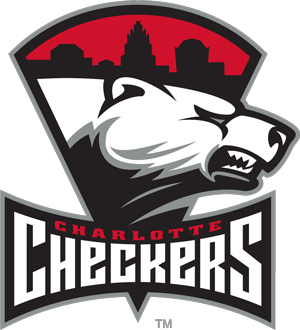Through all the ups and downs they’ve been through to start this season, the Checkers have continued to shine in an often underappreciated aspect of the game – the penalty kill.
Charlotte’s penalty kill is currently operating at 92.7 percent, more than five percentage points better than any other team in the AHL. The Checkers have shut their opponents out on the man advantage in 17 of their 24 games this season and have successfully killed 63 of their last 67 times shorthanded.
So what exactly has been driving the league’s best kill?
The first thing to note is the person at the top. During his ascension to Checkers head coach, Ryan Warofsky has made a name for himself by deploying stellar penalty killing units. In five seasons with South Carolina (three as an assistant coach and two as head coach), Warsofsky had the ECHL’s top penalty kill three times and a top-three unit once. Then last season, his first in the AHL, Warsofsky helmed the league’s top-ranked penalty kill.
A common thread through all of that success is Warsofsky’s plan of attack.
“The system that we run is pretty aggressive and makes everyone be on the same page,” said Warsofsky. “That’s a big reason why it works. I’ve had success with the system before so we didn’t really want to change it.”
It’s more than just the X’s and O’s that has ignited that penalty kill though. It’s a total shift in attitude.
“It’s not just the system in place, it’s the expectation that we’re going to execute that system,” said Checkers defenseman Roland McKeown. “I think the overall system works and then there’s the pressure put on us to kill.”
While it’s one of the less heralded areas of hockey, the coaching staff has worked hard to drive home the importance the penalty kill and what it can bring to the team.
“We put a lot of emphasis on it,” said Warsofsky. “It can win you a hockey game and it can lose you a hockey game. It can change the game in a split second.”
“It all goes together,” said McKeown. “From that middle forward to the D stepping up at the blue line, it goes a long way toward helping our team win.”
As part of driving home that importance, Warsofsky pushed for his team to take pride in their work on the penalty kill.
“It’s almost like a team within the team, we came up with that term last year,” said Warsofsky. “It can change the momentum of the game if you kill off a 5-on-3 or if you kill off back-to-back power plays, all of a sudden the tide changes in the game and you get some momentum out of it. Our guys have done a great job of that.”
The continued success from league to league with waves of new personnel points to a strong structure in Warsofsky’s deployment of the penalty kill, something that former head coach Mike Vellucci championed from the time Warsofsky was brought on throughout the whole season. Now that he’s in the driver’s seat of the team, Warosfsky has handed the reins over to new assistant coach Patrick Dwyer.
“Mike and I talked a lot about it through my process of coming here,” said Warsofsky. “Patty’s done a good job of taking it over and pre-scouting what teams are trying to do.”
There’s been no drop off in production under Dwyer’s watch, as he now oversees what has once again become the league’s top-ranked penalty kill.
“He was really open to doing what we wanted and he’s learned and done a really good job of teaching it, which is important,” said Warsofsky. “He’s put his own little twist on things and he’s been excellent at pre-scouting it and showing video and teaching it and pointing out what their trigger points are and what we’re looking for in certain situations.”
While the Checkers look to steady the ship and push their way back up the standings, having a top-tier penalty kill to lean on will continue to be a crucial benefit.
“We’re used to it, we feel comfortable doing it and if we execute it properly, it all helps us win games,” said McKeown.






